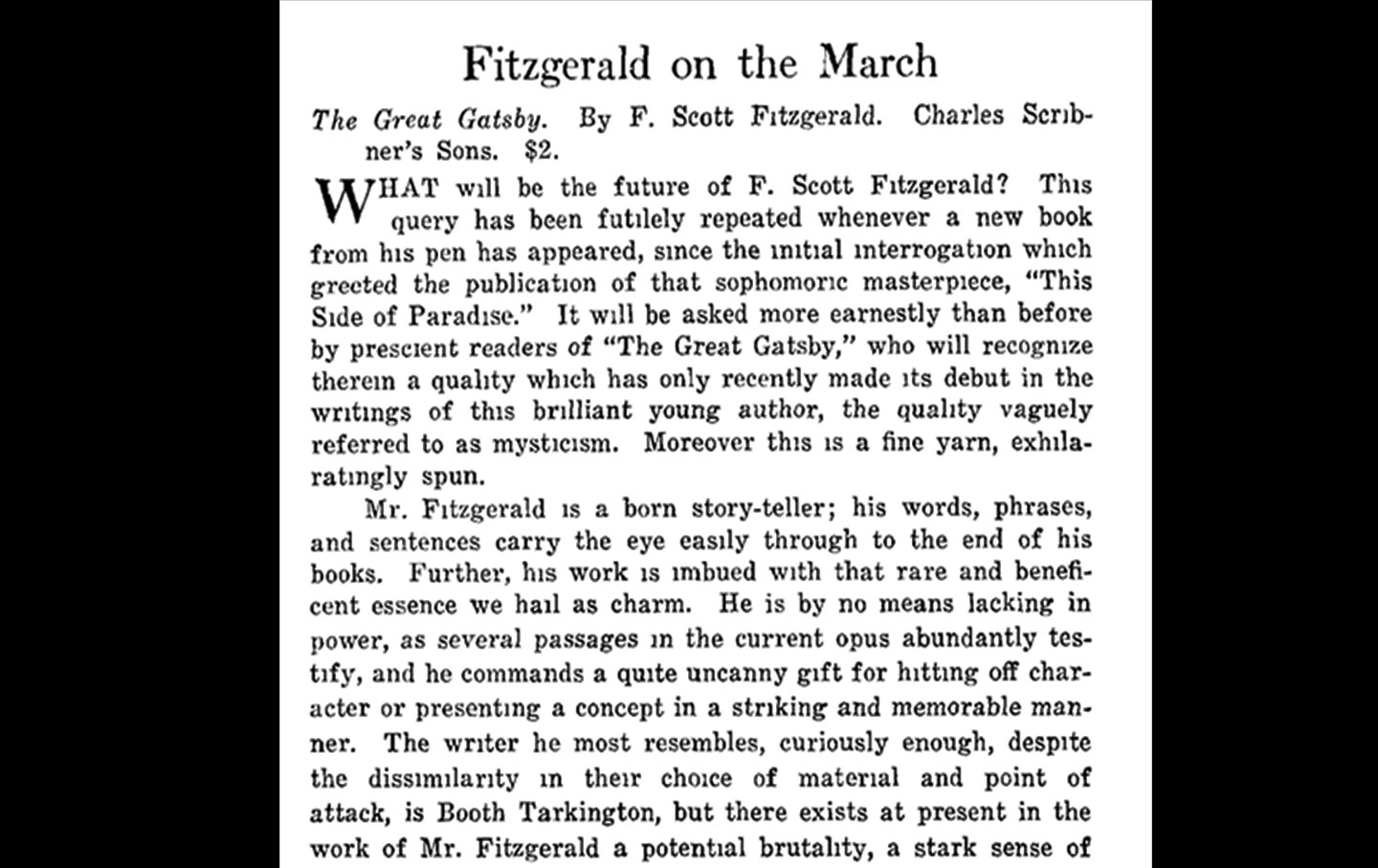Dreams of Creation
Hari Kunzru’s novels of artistic and political frustration.
Hari Kunzru’s Novels of Creative Destruction
Like his prior two, his latest tells a story of artistic and political frustration.
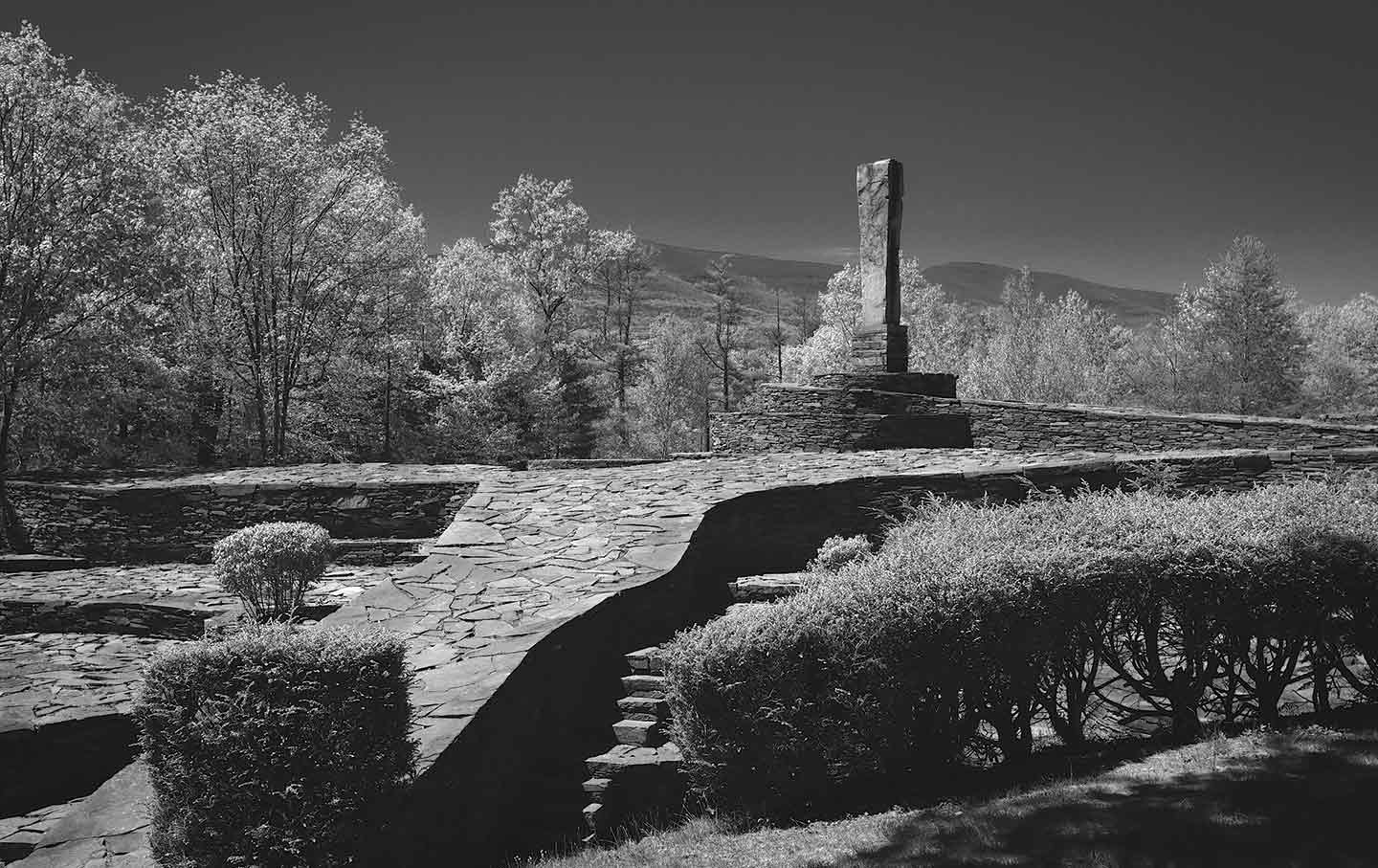
Opus 40, the environmental sculpture park created by Harvey Fite in Saugerties, New York.
(John Kisch Archive / Getty Images)
Occupational hazards abound for Jay, the narrator of Hari Kunzru’s latest novel, Blue Ruin. We meet him in 2020, in the early days of Covid, as he delivers groceries in upstate New York. He has already contracted the virus and is suffering from its aftereffects—his breathing is labored, his heart fragile—and when he pulls up to a house to make a delivery, he realizes that one of the customers is his ex-girlfriend Alice, whom Jay hasn’t seen since she left him for his best friend decades ago in England. As he carries her packages to the porch, his weakened body gives out. Alice watches him collapse in front of the car, which has also been, for some time, Jay’s home. Though the property, which turns out to be a vast estate belonging to an absent billionaire, is supposed to be closed to visitors, Alice takes him to a barn on the grounds where he can recover in secret.
Books in review
Blue Ruin: A Novel
Buy this bookCovid, cardiac stress, economic uncertainty, accidentally delivering your ex-girlfriend’s groceries—these are some of the perils of gig life, and Kunzru extensively details many more. But in addition to his misery as a delivery driver, Jay is (or was) a conceptual artist, and his true difficulty lies in his struggle to distinguish between art and life. Since his days at art school in England, where he began his career as a painter and later became a performance artist, Jay has been unable to outrun either himself or his practice. His life in America might be part of his final art project, one that has taken him across continents, from autonomous squatters’ zones to delivery workers’ tenements—a performance that has never ended and that he’s almost forgotten was a performance at all.
Blue Ruin is Kunzru’s third in a series of novels about, more or less, work-life balance—how the yearning to work at one’s art is weighed against the crushing tedium of the nonartistic work one does to stay afloat. In these novels, history lurks in the shadows, full of petty acts of violence (cheating, stealing) and larger injustices (slavery, fascism). This history has constructed the worlds of the narrators of this trilogy, all creatively and intellectually inclined men, and despite their best efforts, they cannot fully transcend it. The young, white stoner of White Tears has a love for the blues so strong as to be parasitic. He trades his talent as a music producer to his rich friend for a room in his apartment and a window into a lifestyle far beyond his reach and finds himself haunted by the ghost of a singer he’d sampled. Red Pill is narrated by a writer whose intellectual aspirations have been hijacked by an addictive TV show, which he’s convinced is trying to turn its viewers into far-right nihilists. Now, in Blue Ruin, we meet one final iteration of this type, an obsessive loner who finds himself susceptible to the romantic idea that he might be able, one day, to finally and completely express himself in a work of art.
Taken together, these novels constitute a study of artists devoted, perhaps overdevoted, to the idea of art as the highest human calling, whose belief in this idea never wavers even as reality gives them all reasons to abandon it. Just as Kunzru’s protagonists struggle to align their lives with their dreams of creation, the novels themselves serve as documents of the difficult process through which art and the real world are reconciled.
We first encounter Jay half-way through his life, which has mostly been going downhill since the dissolution of his relationship with Alice in London in the 1990s. They met in their 20s at a rank Shoreditch after-party; at the time, Jay was a striving, working-class art school graduate trying to figure out what he wanted his work to be, and Alice was an aspiring curator hiding the fact that she was living in her aunt’s posh Knightsbridge apartment. After that blurry first encounter, they meet briefly at a film screening, then again at one of Jay’s early performance pieces, a reconstruction of the abuse he suffered at the hands of his stepfather, who once locked him on a balcony for several hours. (We learn some way through the story that Jay is half-Black, raised by his white mother, though he ran away as a teenager to escape his racially abusive stepfather.)
Alice is impressed with Jay’s work and the honesty of his alienation, which seems a world apart from the highly monetizable cynicism of their contemporaries. She later helps Jay and Rob, his closest art school friend, to set up a gallery in an East London squat. Though it debuts to unexpected success, their landlord shuts it down soon after, leaving Jay adrift on a wave of drugs and ennui. Eventually, with Jay’s few acclaimed performances leaving him no more certain of his place in the art world, Alice leaves him for Rob, who has learned to make good on his ambition, and she and Jay lose touch.
“There are really only two kinds of artist,” Jay tells the reader. “You’re either an intellectual or a savage.” Rob, in their time as friends, proved to be a savage; he paints big, glamorous canvases designed to be snapped up by credulous buyers. In London, he revels in “being part of a fashionable scene” and “talked about as a rising star.” He goes around “dolled up like a court jester,” ready to “take his rightful place as a Young British Artist.” Even before they graduate from art school, Jay thinks that Rob has “achieved what we all wanted, the blissful dissolution of art into life.”
Jay, an intellectual, lives instead in a closed circuit of reading theory and making ephemeral performance art. After the breakup with Alice, he became even more militant in his commitment to, in Jay’s words, “erasing my presence” in his own work. His performances became “extreme”: He “fasted, drinking nothing but water…[taped] black plastic over the windows and [lived] in darkness.” He’d “spend whole days wearing headphones and wax plugs in [his] ears, trying to experience a world without external sound, the pure frequency of reality.”
“The only duty the artist has is to become more completely him or herself,” Jay writes in his diary. For his thesis show, he locks himself inside a cell with nothing but basic facilities and an easel. After three days, he emerges with a Polaroid of a painting, which he shows to his teachers and then destroys the canvas. Jay wants to make art that is deliberate in its wastefulness, that shows his “creativity without hope of recompense.” In another early conceptual work, he nearly gets himself blacklisted by trying to stage a performance revealing how the prestigious gallery hosting the show paid its cleaning staff less than the minimum wage.
“Most of my work at that time wasn’t intended for anyone else to see,” Jay realizes later. “My work—and not just my work, everyone’s work, the work of all artists—was an alibi for the desire to put a frame around a certain part of life, to declare that inside the frame was art, and outside was not.” After he is nominated for a big prize, he recoils from the attention and refuses to be photographed—“eventually compromising” by wearing a mask of a Young British Artist’s face. He also revises his diary entry: “The only duty the artist has is to forget himself, to forget he ever existed.”
By the time Jay shows up at the compound with Alice’s groceries, he has almost achieved this state of nonbeing: He has left London without his passport, floating on the margins of European society and winding up in North America without papers. His encounter with Alice is jarring, bringing with it memories of his old hopes and the London art scene—but it’s his reconnection with Rob, his old friend and fellow squatter, that really tests his sense of continuity with his younger self and whether the distance he has created between himself and the art world—not just the art market, but also his fellow artists—has really been worth it.
The latter-day Jay recounts this past as he recovers in the barn on the billionaire’s estate. Alice and Jay are trying to keep his presence a secret from the other people on the property: from Rob, especially, but also from Rob’s gallerist, Marshal, and Marshal’s younger girlfriend, Nicole—who, like Jay, is Black. Jay, of course, is soon discovered: Convinced of the imminent breakdown of society, Marshal hunts him down after he “got a call” tipping him off about Jay and marches him to the house at gunpoint. As everything gets cleared up, Jay is less disconcerted by the guns and zip ties than he is by learning that Marshal turns out to remember—and admire—his art.
This discovery, and the fact that Alice has been hiding Jay, disrupts the tense equilibrium of the compound for good. Marshal, we learn, has promised his backer—the absentee paranoid billionaire who owns the estate—a huge new piece by Rob, but it becomes increasingly clear that Rob has spent his time there high, drunk, and unable to paint, threatening to sink his family (he has a daughter with Alice, though we never meet her) into deep debt. “I always assumed you’d be writing books, running a museum,” Jay tells Alice when they reconnect. No, she replies: “I clean up Rob’s messes.” However successful an artist becomes, they remain in a world of bills and overflowing trash.
Jay brings the baggage of the past onto the estate, and soon the present intrudes too: Everyone except Jay, who avoids the Internet, gets news of George Floyd’s murder near the end of the book. Nicole, who has family in New York City, wants to return as soon as she hears news of the uprisings. But Marshal has to stay because the billionaire has decided to return to the estate from his New Zealand compound. Meanwhile, Jay turns out to be the only one who can provoke Rob into actually finishing the promised piece. Marshal’s indifference to Floyd’s killing, and his willingness to call the police on Rob when he locks himself in his studio with a gun, finally forces Nicole to leave. Jay, having set Rob back at his canvas and nervous about his own status as an undocumented immigrant when the police arrive, leaves for the city after Nicole, and the book ends there.
These reminders of the real world are pointed (we are meant to remember that Peter Thiel planned to build an elaborate bunker in New Zealand) but also delicate (George Floyd is not named, though the video of his death is briefly described). These are gestures at a political analysis that we never quite get, either implicitly or diegetically. The problems and villains of our own world are present in the novel, but without a momentum of their own; it’s as if they’re there just to remind us that, even in our fictional reverie, we haven’t escaped them.
Following Jay over two continents and several decades, Blue Ruin picks up threads and motifs from Kunzru’s earlier books: a warped sense of time; the oppressive aesthetics of the über-rich; an interest in techno-futurism, drugs, and a counter-bourgeoisie of punks, anarchists, and squatters.
While Red Pill and White Tears are more preoccupied with the problem of how to properly consume and interpret art than how to create it, all three books are studies in the tension between creation and the outside world, holding dear the untimeliness of artistic production and exploring the mania it can produce.
For a writer so preoccupied with the distinction between art and life, Kunzru is steadfastly uninterested in autofiction. As his characters struggle with what to make of their art, we can imagine Kunzru at his desk, working out his own questions on the page. But his characters are mostly free of the vertiginous interiority of their autofictional peers. In fact, his characters are often opaque, even to themselves. They act (or, more often, don’t act) and then peer back to try to figure out why; often it’s because they lie in the shadow of someone more charismatic and forceful, whose magnetism is a great and bitter mystery.
Kunzru seems to use his fiction as a way to test a set of theses—in the case of Blue Ruin, on whiteness and race; on the entrenchment of the far right in polite society; on how visions of the future have yielded from the domain of art to that of technology; on the sinister power of charisma; on the intrusion of the real world into the realm of creative expression, and vice versa. His novels also aspire to be works of intellectual and political argument; in this way, they are like his essays for Harper’s and The New York Review of Books, many of which are also efforts to investigate, for example, the appeal and pervasiveness of neo-Nazism or the demise of the welfare state, and to resurface punk esoterica and other forgotten histories of underground music.
Popular
“swipe left below to view more authors”Swipe →But these efforts, which make for excellent essays, don’t always make for fully rounded novels. As the outside world, the reader’s world, enters into these books more and more by their conclusion, the rich questions about art come to feel a little inadequate, overwhelmed by the drama of world events. Just at the point where the reader might hope to have their understanding of reality expanded or challenged, the novels instead succumb to it—to the real world and its specific problems. White Tears ends with the revelation that the lost blues genius who haunts the narrator and his roommate for most of the book died on the chain gang that made the latter’s family rich. Red Pill concludes with Donald Trump’s election. And though the pandemic recedes to a buzz in the background of Blue Ruin, the murder of George Floyd informs its final chapters.
Kunzru’s novels, preoccupied as they are with art—who makes it, what makes an artist, what makes art—have a searching, questing tone that his authoritative and persuasive essays on politics and history do not. “For me,” Jay says, “making art was inescapably cerebral.” He might have been working in any medium—music, in the case of White Tears, or prose, as in Red Pill, or performance art in Blue Ruin; the struggle to create remains a social one, a problem that must be worked out in relation to a flawed world. As Kunzru’s readers know, this work never ends.
Support independent journalism that exposes oligarchs and profiteers
Donald Trump’s cruel and chaotic second term is just getting started. In his first month back in office, Trump and his lackey Elon Musk (or is it the other way around?) have proven that nothing is safe from sacrifice at the altar of unchecked power and riches.
Only robust independent journalism can cut through the noise and offer clear-eyed reporting and analysis based on principle and conscience. That’s what The Nation has done for 160 years and that’s what we’re doing now.
Our independent journalism doesn’t allow injustice to go unnoticed or unchallenged—nor will we abandon hope for a better world. Our writers, editors, and fact-checkers are working relentlessly to keep you informed and empowered when so much of the media fails to do so out of credulity, fear, or fealty.
The Nation has seen unprecedented times before. We draw strength and guidance from our history of principled progressive journalism in times of crisis, and we are committed to continuing this legacy today.
We’re aiming to raise $25,000 during our Spring Fundraising Campaign to ensure that we have the resources to expose the oligarchs and profiteers attempting to loot our republic. Stand for bold independent journalism and donate to support The Nation today.
Onward,
Katrina vanden Heuvel
Editorial Director and Publisher, The Nation
More from The Nation
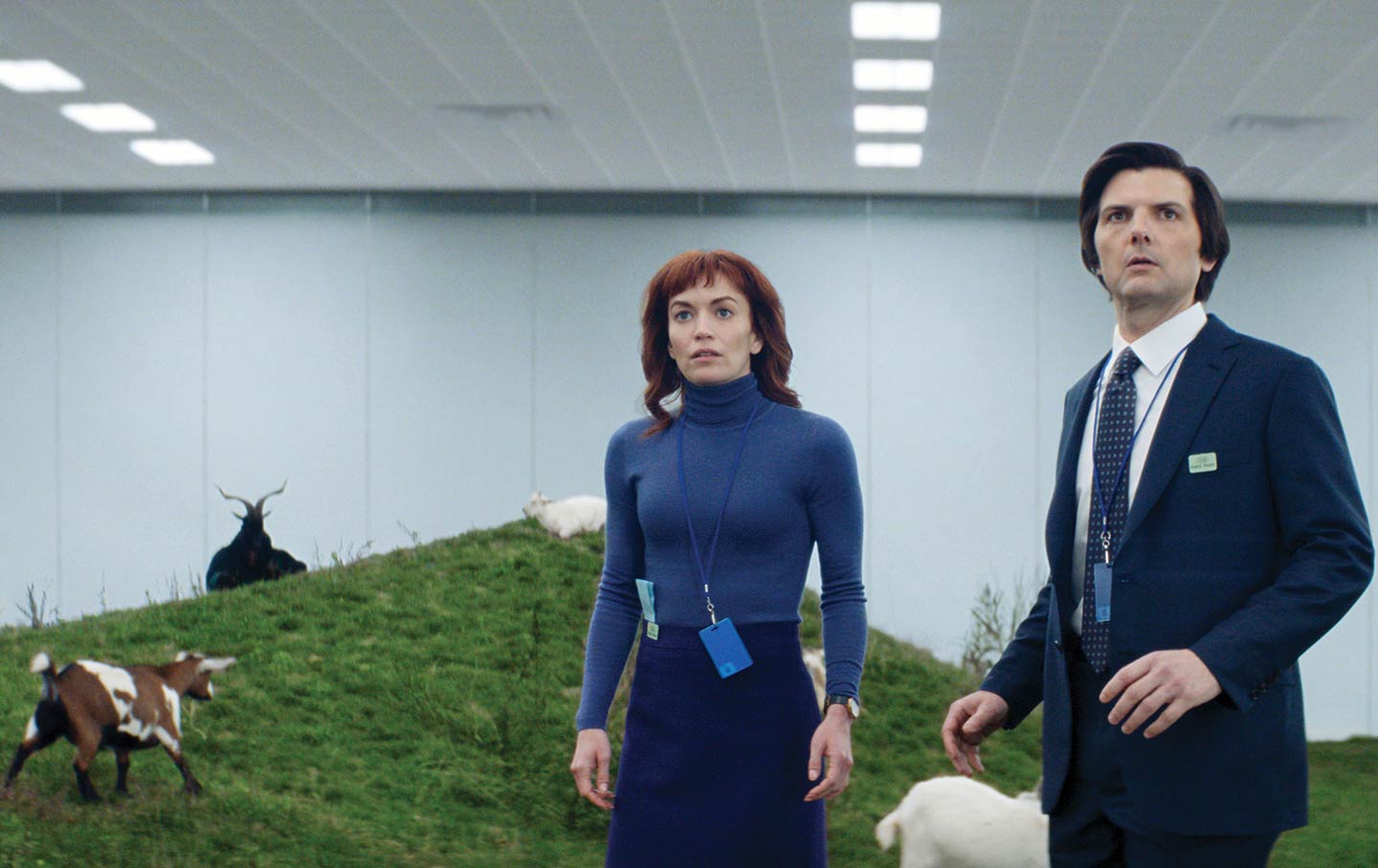
The Workplace Nightmares of “Severance” The Workplace Nightmares of “Severance”
The appeal of the Apple TV+ series is how it dramatizes our alienation from labor.
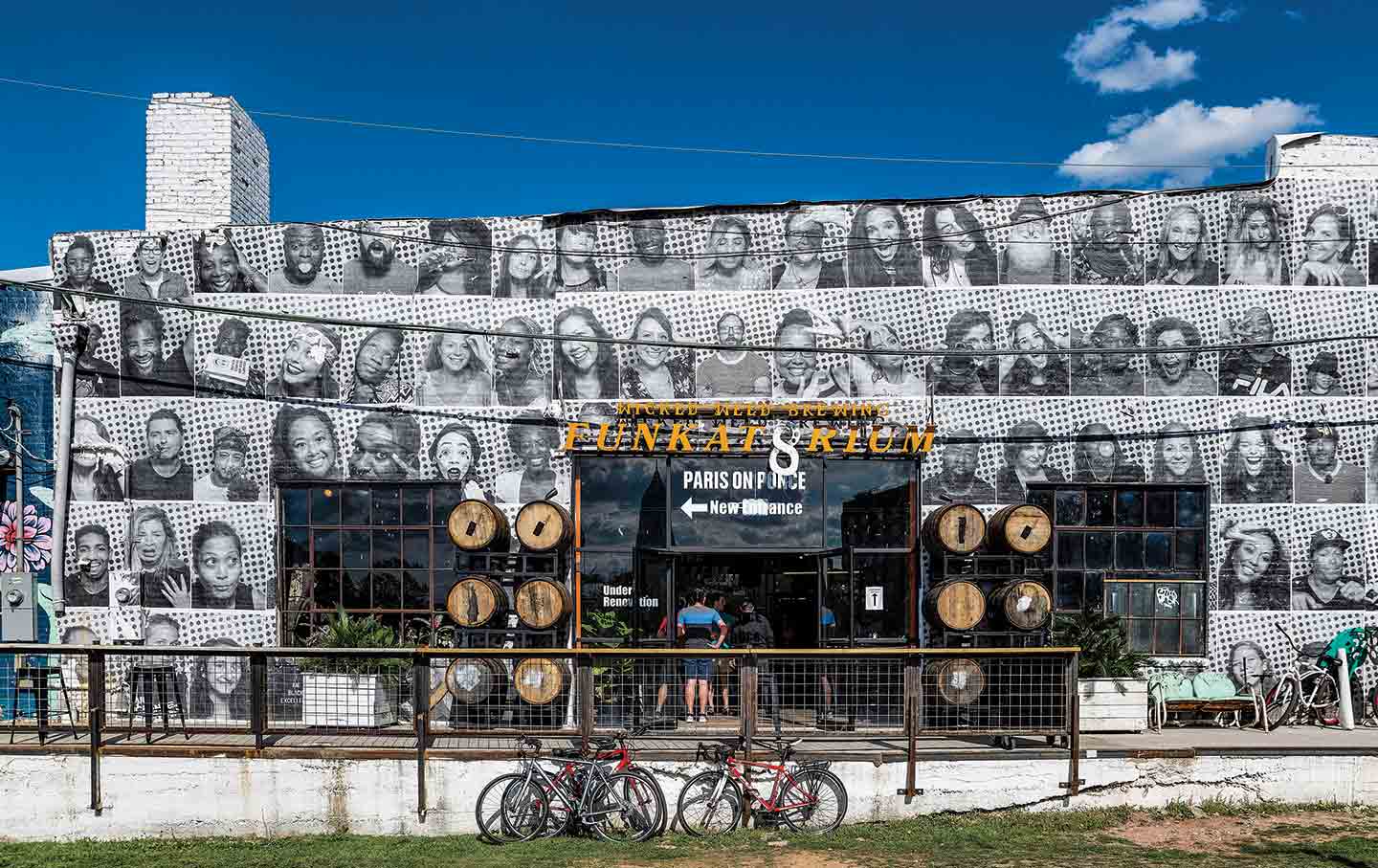
How Atlanta Became a Walkable City How Atlanta Became a Walkable City
The Beltline and Georgia's experiment in pedestrian spaces.

The B-Sides of the “Golden Record,” Track Eleven: “How Will You Begin?” The B-Sides of the “Golden Record,” Track Eleven: “How Will You Begin?”
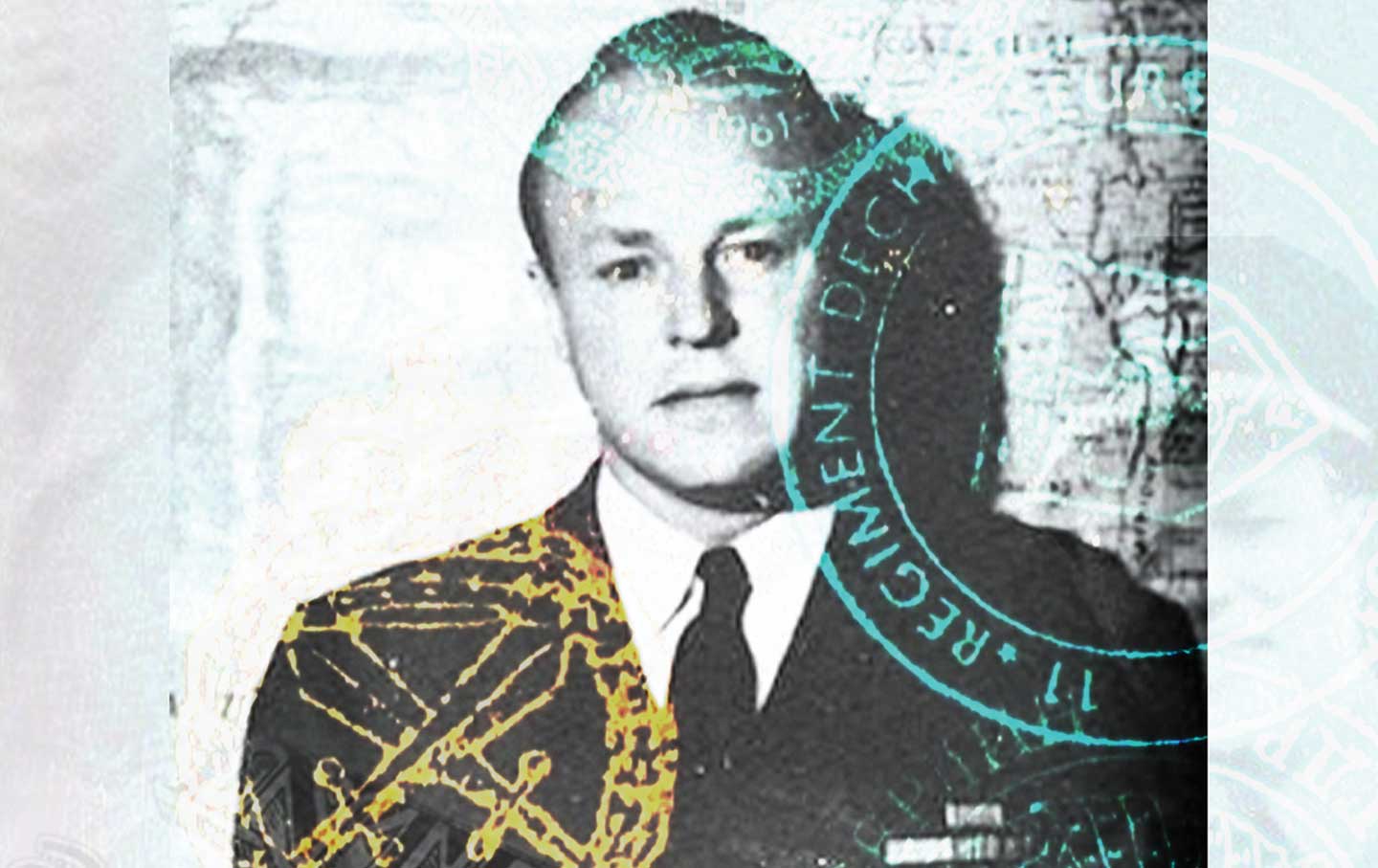
The Making of a Cold War Spy The Making of a Cold War Spy
The life and work of Frank Wisner, one of the CIA’s founding officers, offers us a portrait of American intelligence’s excesses.

